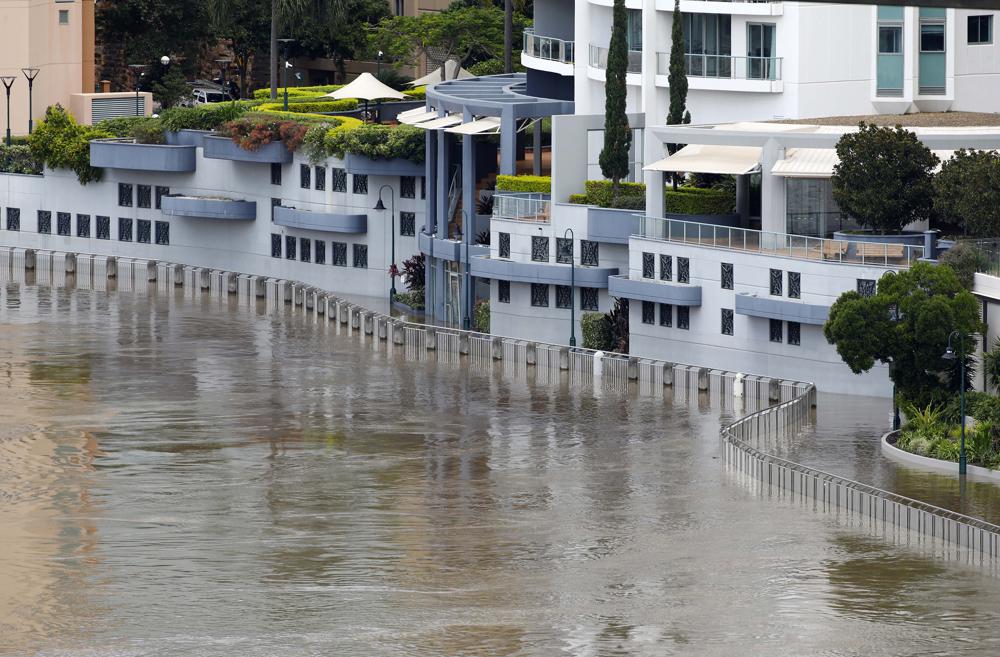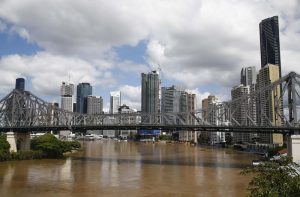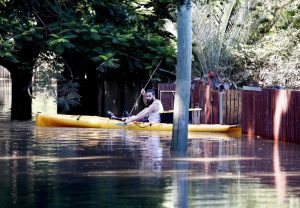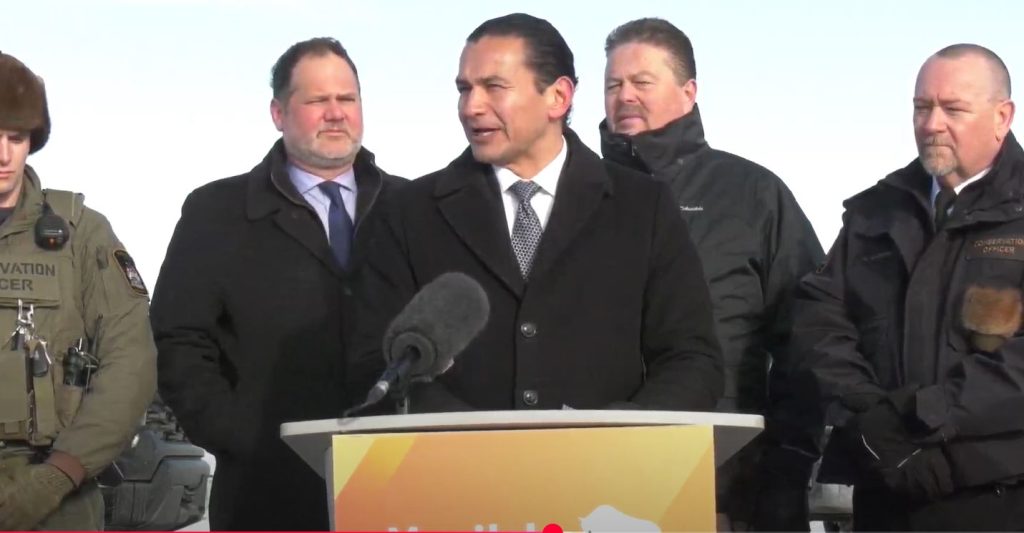Sydney braces for flash floods as rain disaster moves south

Posted March 2, 2022 2:58 pm.
Last Updated March 2, 2022 4:02 pm.
SYDNEY, Australia — Sydney was preparing on Wednesday for dangerous flash flooding as population centers farther north began a massive cleanup operation after record floods that have claimed at least 14 lives along Australia’s east coast in recent days.
The torrential rain — as much as 20 centimetres (8 inches) — is forecast for Australia’s largest city and surrounding areas late Wednesday and early Thursday, Australia’s Bureau of Meteorology said.
“In the Sydney area, we have minor to major flood warnings current,” meteorologist Dean Narramore said.
In the New South Wales town of Lismore, 600 kilometres (370 miles) north of Sydney, a fourth death was confirmed on Wednesday as floodwaters drain from homes and searchers knock on doors.
The body of a man, aged in his 70s, was found in a flooded apartment, a police statement said.
A man’s body had been found floating in a main street earlier on Wednesday.
The population of 28,000 people was inundated when the Wilsons River peaked Monday afternoon at its highest level since records began in 1880.
Authorities expect the death toll to rise in Lismore and its surrounding areas.

Floodwaters continue to flow down the Brisbane river in Brisbane, Australia, Wednesday, March 2, 2022. Tens of thousands of people had been ordered to evacuate their homes and many more had been told to prepare to flee as parts of Australia’s southeast coast are inundated by the worst flooding in decades. (AP Photo/Tertius Pickard)
BRISBANE
Dozens of suburbs remain flooded in Brisbane, Australia’s third-most populous city 750 kilometres (470 miles) north of Sydney, after the river that snakes through its center peaked on Monday.
The Queensland state capital had received 80% of its average annual rainfall within a few days.
Tens of thousands of people were ordered to evacuate their homes by Tuesday and hundreds of thousands more were told to prepare to flee as parts of Australia’s southeast coast were inundated by the worst flooding in more than a decade. At least 10 people have died.
New South Wales Premier Dominic Perrottet said there had been 1,000 rescues in the state by Tuesday and more than 6,000 calls for authorities to help.
Scores of residents, some with pets, spent hours trapped on their roofs by a fast-rising river in the town of Lismore in the state’s north.
The body of a woman in her 80s was found by a neighbour in her Lismore home on Tuesday, a police statement said. There were no details of how she died.
Dozens of cars were trapped on a bridge in the nearby town of Woodburn over Monday night with both the bridge’s approaches submerged. Up to 50 people were rescued from the bridge early Tuesday, officials said.
“We had no capabilities to get them off in the dark so we just had to make sure that they bunkered down and we went in this morning and got them all out,” Woodburn State Emergency Services Commander Ashley Slapp said.

In this photo provided by the Fraser Coast Regional Council, water floods streets and houses in Maryborough, Australia, Monday, Feb. 28, 2022. Heavy rain is bringing record flooding to some east coast areas while the flooding in Brisbane, a population of 2.6 million, and its surrounds is the worst since 2011 when the city was inundated by what was described as a once-in-a-century event. (Queensland Fire and Emergency Services via AP)
The floodwaters were moving south into New South Wales from Queensland state in the worst disaster in the region since what was described as a once-in-a-century event in 2011.
Perrottet said 40,000 people had been ordered to evacuate, while 300,000 others had been placed under evacuation warnings.
Government meteorologist Jonathan Howe described the recent rainfall in northern New South Wales and southern Queensland as “astronomical.”
Nine of the 10 deaths reported so far were in Queensland. A 76-year-old man who disappeared with his vehicle in floodwaters northwest of Brisbane on Sunday has since been confirmed dead.
Queensland Police Commissioner Katarina Carroll said another man in his 70s remained missing after falling from his moored yacht in the state capital Brisbane into a swollen river on Saturday.
The cleanup was underway in Brisbane, Australia’s third most populous city, despite more storms forecast for later in the week. Brisbane Lord Mayor Adrian Schrinner urged people to register for the “Mud Army,” as the thousands of volunteers who mobilized to help out after the 2011 floods were dubbed.
Thousands of homes in Brisbane were inundated Sunday, many by swollen creeks in suburbs such as Ashgrove, where Kelvin Barfoot had to evacuate with members of his family, including his 99-year-old mother-in-law, Mina Baker, in a State Emergency Service rescue boat.
The family moved back into the top floor of their two-story home and started removing damaged furniture and electrical appliances that had been covered by almost 1.5 meters (5 feet) of water.
“We thought we were pretty well prepared for it,” said Barfoot, who leads a volunteer bush care group which has tallied more than 4,000 hours of planting and weeding along Enoggera Creek over the past six years. “Just unbelievable. When it did start coming in, it went up very quick.”
Barfoot said his daughter and her husband swam to the house to help with the rescue after notifying emergency services that her grandmother — who moved to Australia from Christchurch, New Zealand, after earthquakes there in 2011 killed 185 people — needed to get out.
“We were pretty much stuck upstairs at that point,” Barfoot said. “That was quite traumatic for my mother-in-law — we got her out (of New Zealand) after the earthquakes, so it was all a bit reminiscent of that for her.
“Now she’s back home. She wanted to come home. She was a bit traumatized, but she’s tough. She came down and asked me if there was anything to do to help!”

A man delivers supplies to stranded residents in Fairfield in Brisbane, Australia, Tuesday, March 1, 2022. Tens of thousands of people had been ordered to evacuate their homes and many more had been told to prepare to flee as parts of Australia’s southeast coast are inundated by the worst flooding in decades. (AP Photo/Tertius Pickard)
Schrinner said the six-day rainfall in downtown Brisbane — 792.8 millimetres (31.2 inches) through Monday morning — was significantly higher than the previous record of 655.8 millimetres (25.8 inches) set when flooding devastated the city in 1974.
Rick Threlfall and Steve Hadley, meteorologists who moved from England to Australia and have been living in Newmarket, Brisbane, for almost a decade, were in the process of sandbagging the ground floor of their home but couldn’t finish in time to beat the rapidly rising flood.
“Back in the U.K., we do weather warnings for 20 millimetres (1 inch) of rain,” Threlfall said. “My weather gauge here has recorded 950 millimetres (37 inches) in three days. Brisbane’s average is about 1,200 millimetres (47 inches) for the year, so we’ve pretty much had 80% of annual rainfall in three days.
“No real escaping the water, I guess.”
The extraordinary rainfall comes as the United Nation’s Intergovernmental Panel on Climate Change reported this week that vast swathes of Australia have already lost 20% of its rainfall and the country’s fire risk has gone beyond worst-case scenarios developed just a few years ago.
Australia’s hottest and driest year on record was 2019, which ended with devastating wildfires across southeast Australia. The fires directly killed 33 people and another 400 people were killed by the smoke.
The fires also destroyed more than 3,000 homes and razed 19 million hectares (47 million acres) of farmland and forests.
But two La Nina weather patterns have since brought above-average rainfall to the same regions.
Lesley Hughes, an Australian academic and lead author of the U.N. IPCC assessment reports in 2007 and 2015, said climate change was expected to overwhelm government systems such as flood responses.
“We can see that our emergency services are struggling already to cope with the floods in northern New South Wales with people stranded on roofs without food for more than 24 hours,” Hughes said.








